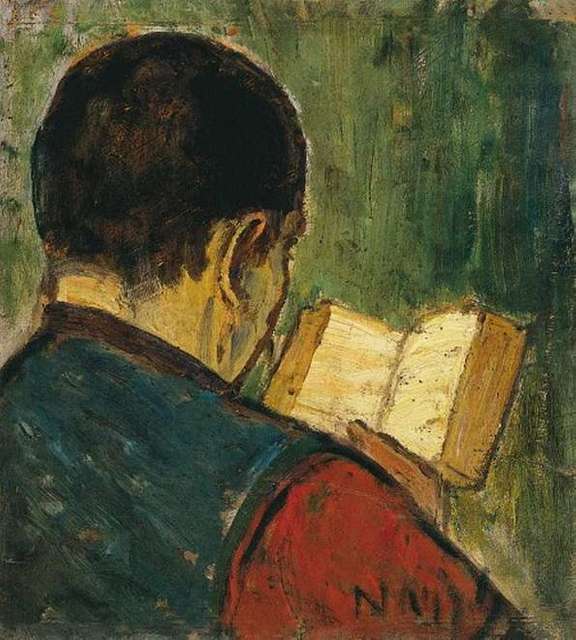Some years ago, I was in the classroom going over a close reading assignment. After discussing the details in what I thought was a comprehensive way, a student raised his hand and asked, “But, Dr. Rawl, what exactly is close reading?” I was taken somewhat aback: hadn’t I just explained the assignment in detail? What more could I add? After resorting to the standard line about “attending to the words on the page” and repeating the instructions on the prompt, I moved on, but I realized in that moment that I hadn’t adequately answered the student’s question.
Later, I came to see that the problem wasn’t my assignment but something more fundamental. My student wanted a simple definition of the methods of close reading, a clear procedure to follow, and a predictable set of methodological inputs that would yield the desired result. I couldn’t, of course, provide such a clearly defined procedure, though that didn’t stop me from trying over the years to refine my answer to that basic question: What exactly is close reading?
I begin with this moment in my teaching life because it foregrounds the questions at the heart of John Guillory’s slender-yet-suggestive On Close Reading. The book, which will mainly be of interest to teachers who want their students to read books in a rather more serious manner than they watch TikTok videos, is a brief but incisive critical examination of close reading in the American academy. On Close Reading is a work of scholarship whose achievement is belied by its size. It is a history of close reading’s emergence, a theoretical reflection on the nature and aims of close reading, and it is a compendium of provocative insights, many of which may be worthy of monographs in their own right. While I may dissent from certain of Guillory’s conclusions, I cannot but commend the work as a necessary contribution to our understanding of close reading.
Guillory’s argument in On Close Reading centers on two related issues: first, why is the term “close reading” so conspicuously absent from the writings of the New Critics, those putative pioneers of the technique? The second central “puzzle” of the book focuses on why scholars have seemingly been unable to “define the procedure of close reading in any but the most uncertain terms” (vii). In what follows, Guillory develops an account of close reading as a technique, and this for him means that it can be taught and learned, but it cannot be “specified verbally in such a way as to permit [its] transmission by verbal means alone” (ix).
The implications of Guillory’s argument regarding technique are significant from a pedagogical perspective. If it is true that close reading is a technique in this sense, and if it is true that close reading is best taught by “demonstration and imitation” (ix), then instructors ought to consider their pedagogy in light of these facts. Teachers might make more room in their courses for the traditional lecture. We may be reluctant to present ourselves as “sages on stages,” but if Guillory is correct, it would be incumbent on teachers to provide clear models of close reading that could then be internalized and imitated by students. We should, in other words, recognize the value of being lectors at the lectern.
Beyond his discussion of close reading as a learnable but not prescribable technique, I appreciate Guillory’s understanding of close reading as a means of “showing the work of reading” (47). Close reading, as Guillory rightly argues, is a markedly different procedure from that practiced by prominent critics of earlier centuries, who routinely made assertions without careful quotation and explanation. It is not the case, of course, that these critics were thoughtless readers or that they hadn’t read closely, but they did not feel the need to demonstrate the basis of their interpretations. Close reading, by contrast, makes explicit the interpretive moves of the writer in such a way as to make the interpretation an object of public debate: as Guillory argues, “close reading does not guarantee validity in interpretation; rather, it opens interpretation to inspection and contestation by other readers” (60). This is a helpful and clarifying way of articulating how close reading makes interpretation a communal act.
While I admire and commend Guillory’s book as an incisive reflection on the nature of close reading, I would be remiss not to register some discontent with certain features of the book. First, and this may be a quibble, if it is true that close reading may be transmitted by example, I would have liked to see some engagement with particular acts of close reading. Without aiming for a post-modern effect, I have to say I’d like to see just a few close readings of specific close readings. Such a procedure would demonstrate more concretely the creative range of expert close readers and reveal their commonalities as well as their differences; for example, what does an Empsonian close reading look like as opposed to a Brooksian? How could a reader or student learn from individual performances of close reading? It would have been helpful to see how techniques of close reading might be transmitted—rather than prescribed—by considering select close readings from a range of sources.
This, as I say, may be a quibble, but I do have more serious reservations about a number of Guillory’s assumptions and conclusions. For one thing, Guillory assumes—without demonstrating—that the New Critics were wrong to value coherence and unity in a work of art; their belief in unity, he says, became an “embarrassment” to later critics (59). In another, more disconcerting passage, Guillory suggests that we need to “detheologiz[e] the technique [of close reading], purging it of its residual mystifications” (81). I take Guillory’s “detheologizing” to imply treating the literary work as “profane” rather than “sacred”: the literary text is no more “set apart” than any other kind of writing. In my view Guillory’s conclusions here risk undermining the purpose of close reading itself. I have always believed that close reading’s purpose—and its defining feature—is to disclose the aesthetic thisness of a work of art; it is a way of lovingly attending to the text in a way that reveals its inner excellences. If the work is disjunct or incoherent, or if the literary text is no different from other kinds of writing, there is nothing of real value to disclose. On these questions, Guillory leaves me unpersuaded.
While my disagreements with Guillory are serious at times, I nevertheless commend On Close Reading. This is because the value of the book, taken as a whole, outweighs its particular flaws. On Close Reading is a helpful and thought-clarifying book on the central technique of literary study, but it’s also of interest to all teachers who want to inculcate in their students the habits of careful, justified interpretations of books. It is gracefully written, original, and exhaustive in its research. It is, in fact, a remarkably comprehensive text, given its small size.
By way of conclusion, I would like to praise the book for its inclusion of an extraordinarily helpful resource in the form of an annotated bibliography of close reading. Compiled by Scott Newstok, this nearly forty-page bibliography is a chronology of major critical interventions on the question of close reading. It is simply invaluable to the researcher to have to hand such a thorough gathering of critical sources on close reading. For this, scholars owe Scott Newstok a large debt of gratitude.
Image Via: GetArchive











Thank you so much for running this piece, Jeff. And thank you so much for writing it, Michael. I have just printed it out so I can read it several more times and also as a reminder to me to get Guillory’s book. I have also forwarding a link to this piece to several friends who would be interested. Lastly, I want to thank Jeff for building into his website the little reminders of pieces that FPR has published that might be similar. One of the pieces that came up in the sidebar was my own “The Final Prayer of Jim Barry.” I hadn’t read my piece since I submitted it nearly a year ago. And I wept as I read it. Wept because Jim Barry was gone from this earth. Wept because none of my sons or grandchildren have ever known a teacher and deeply good man like Jim Barry. Wept because very few of us will ever have the privilege of knowing someone like Jim Barry. I was crying out of sorrow that he was gone, but I was also crying out of the joy of having known Jim. Michael, you are teaching at what is one of the few colleges left in the country where a student might very well meet a Jim Barry and also get a real education in how to read. I am deeply grateful there is a Grove City College! With deepest gratitude, Mel Livatino